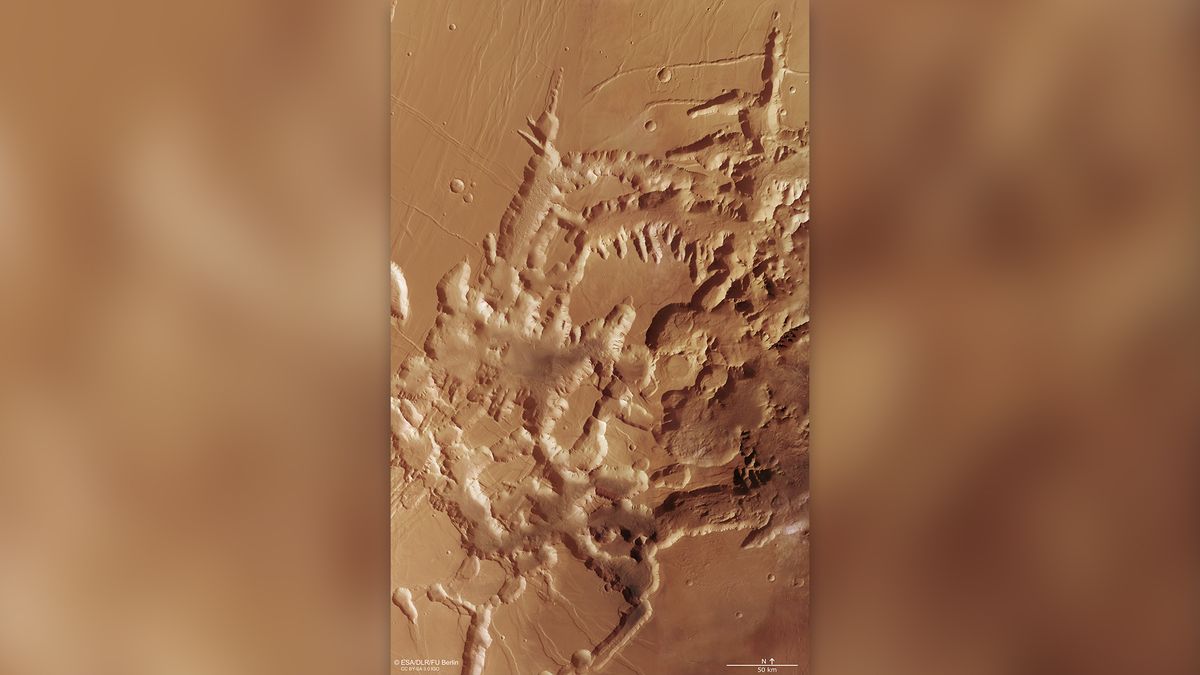What it is: This is a rift valley known as Noctis Labyrinthus (“labyrinth of night”)
When it was published: Jan. 24, 2024
Where it is: Situated between Valles Marineris and Tharsis on Mars
Why it’s so unique: Noctis Labyrinthus stands out as an exceptional feature in the solar system. It spans an impressive 739 miles (1,190 kilometers) in length, 19 miles (30 km) in width, and reaches a depth of 4 miles (6 km). This region of Mars is characterized by rift valleys adorned with sand dunes, canyons, and landslides. A recent labeled and zoomable image, released by the European Space Agency (ESA), is based on data gathered by the Mars Express spacecraft, which has been orbiting the Red Planet since December 2003. In October 2023, ESA unveiled a flyover video of the same region, utilizing images from Mars Express and topographic information to reconstruct the landscape in 3D. In the new image, remnants of the original ground level are still visible, despite significant erosion of the ground. This has been caused by volcanism stretching the surface upward, leading to the thinning of the planet’s crust and the formation of cracks. Noctis Labyrinthus is positioned between the western edge of Valles Marineris, an extensive canyon system often referred to as the “Grand Canyon” of Mars, and Tharsis, the largest volcanic region on Mars, housing 12 large volcanoes. Over its nearly 20 years of scientific exploration, Mars Express has delivered stunning images of the Red Planet and documented the history of water across its surface, providing evidence that Mars once had environmental conditions conducive to life.
How to locate it in the night sky: Mars can be observed just before sunrise, appearing brightest close to opposition, when it is closest to Earth. These opposition events occur approximately every 26 months, with the next one scheduled for Jan. 15, 2025.















